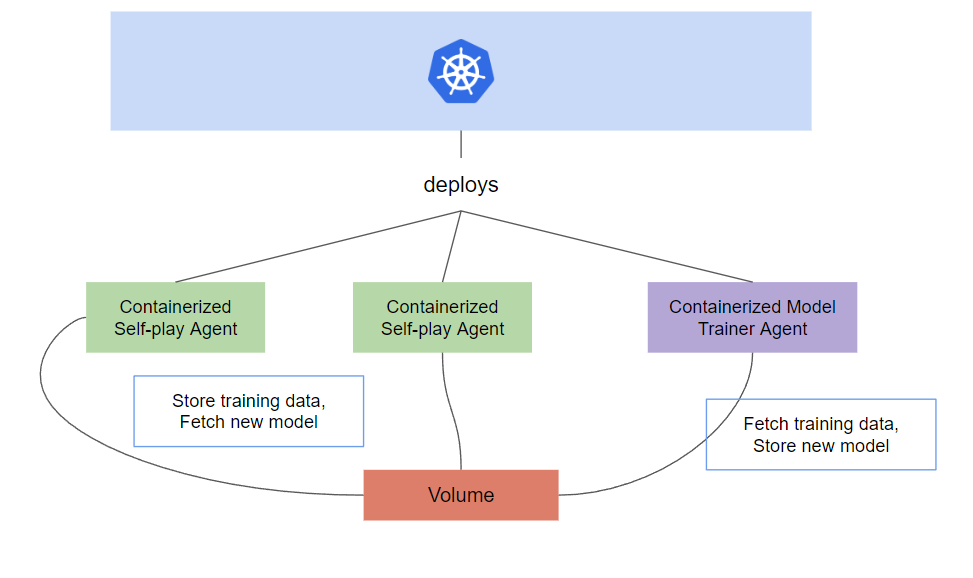Containerizing a Reinforcement Learning Pipeline
After spending roughly 14 months at Red Hat working with a container focused team on container-focused projects, I’ve had a lot of fun. I’ve learned plenty too. I’ve got some new ideas about past projects floating around in my head; so let’s get them down on paper.
Proposal
I spent the better part of a summer working on SelfLearningBots (I could’ve picked a better name 😞). The idea was to provide a tool to make your own Alpha-Zero like AI. The user provides the game environment described by an interface, and as long as the game is two-player and non-deterministic, the AI will learn through self-play.
I’ve come to realize that containerizing this application can:
- Decouple two important steps in the training process
- Introduce two asynchronous agents
- Allow the tool to be used efficiently with container-orchestration systems
The changes above will allow for an overall faster training process, not to mention the development headaches containers save.
Current Layout

Tha main process launches self-play processes. These agents are responsible for the self-play part of the training loop as they produce the training data. When sufficient data is gathered, the self-play agents halt, and the main process begins training the model using the generated data. This process is repeated until the developers are satisfied.
Self-play agents stopping is a bottleneck in the pipeline. This leads to a periods where new data is not being produced and periods where the GPU is not being used for training. When the self-play agent and model trainer agent are decoupled, they may run asynchronously; and training data is produced and consumed continuously.
Once this is achieved, we can containerize our two independent agents.
New Layout
Thus far, containers haven’t been a requirement. We don’t need containers to decouple our two agents, and we don’t need containers to run them asyncronously. However, containers save the day in deployment. Many GPU-enabled machine learning workflows require developers to run their pipelines on remote instances using providers like GCP and AWS. Developers don’t want to setup dependencies like CUDA toolkit over and over everytime compute instances are changed slightly. Besides, containers let us use tools like kubernetes.

With a container orchestration system, we can tune the ratio of trainer agents to self-play agents. The training process is easily adjusted to our hardware.
Conclusion
These posts also serve as personal notes so lets lay it all out:
- We decoupled the self-play and model trainer agents
- This resulted in a more optimal resource usage, as both agents are constantly producing and consuming
- Decoupling allows us to containerize our two agents
- We can now use a container orchestration system to deploy our containerized agents